Air Defense System to Forge Many Platforms Into One Network
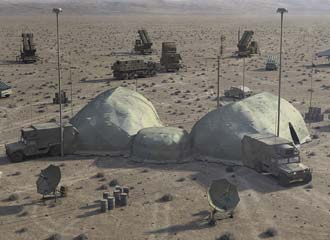 |
A mix of hardware and software, the IBCS consists of servers, radios, workstations and virtual systems designed to provide warfighters with a unified picture of the airspace above a battlefield. |
By the middle of this decade, a new command and control system will provide U.S. Army air defense forces with an extended view of the airspace over a battlefield. The capability will integrate the service’s sensors and weapons into a single network, allowing each platform to perform to its maximum abilities while minimizing operational weaknesses. Commanders will be able to access data quickly from any sensor on the network and order any weapon to engage a target.
The Integrated Air and Missile Defense (IAMD) Battle Command System (IBCS) program will connect Army forces with a network-centric architecture for air defense platforms. This will dramatically expand the warfighters’ ability to counter threats such as ballistic missiles, cruise missiles and unmanned aerial platforms, explains Col. Harry Cohen,
Cohen explains that tailoring force packages rapidly and flexibly using available units and resources provides commanders and their staffs with greater agility to defend the assets they are assigned. Additionally, the IBCS will allow officers to manage operations from tactical to strategic levels of warfighting by permitting them to control any sensor or weapon on the network directly. The system also will help regain commanders’ decision space in a complex, highly ambiguous environment, where acquiring erroneous information or experiencing delays can diminish the amount of time needed to process and act, and this could have disastrous consequences. “It will fundamentally change the way we fight air and missile defense warfare,” Cohen observes.
The IBCS will link to the Joint Data Network, which will make information available to network subscribers and set conditions for the use of joint air and missile defense platforms in the area. Another facet of the system is the Integrated Fire Control Network, which will provide a plug-and-fight capability that permits systems to plug into the larger theater air defense picture and its command and control structure.
There are two key elements to the program: The first is integrating capabilities to increase air defense effectiveness, and the second is creating a common battle capability with a common user interface. The interface will be a workstation with common tools and screens available across all echelons. The workstations will provide access to a variety of battle management aids such as mission planning and sensor data sharing applications to help coordinate missions. “You’re going to be at the same workstation wherever you’re at, and you’re going to see the same kinds of data,” he says.
Cohen notes that the Army’s current air defense command and control systems are system-centric in that they only control the system to which they are linked. Systems such as the Patriot missile have unique command and control, sensor and weapons interfaces that make full integration with other Army, joint and coalition platforms difficult. “Through the years, we have been able to achieve varying levels of ‘interoperability’ with these other platforms, but it has fallen far short of the ‘integration’ of air and missile defense assets needed to succeed in today’s operating environment,” he maintains.
The IBCS program is scheduled to achieve initial operational capability in 2015 or 2016 with the goal of fielding one IBCS-equipped battalion per year. The program’s goal is to move the technology forward in increments. Cohen says that the initial operational capability covers Increment 2 of the program and includes a fully operational software system and hardware to begin equipping units. Increment 3 will move beyond Army platforms and work to integrate the other services’ platforms. The third increment also explores including other mission areas in the Army, such as the ability to carry out indirect fires. This will allow Army units not only to engage incoming aircraft and missiles, but also to strike the sources of the enemy attacks.
Besides connecting air defense systems and sensors from the other services, IBCS will integrate Patriot weapons systems, Surface-Launched Advanced Medium-Range Air-to-Air Missile (SLAMRAAM), Joint Land Attack Cruise Missile Defense Elevated Netted Sensor (J-LENS), Sentinel radars and possibly the Terminal High-Altitude Area Defense (THAAD) and the Medium Extended Air Defense System (MEADS).
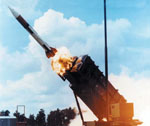 |
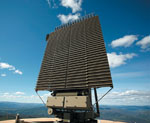 |
The goal of the U.S. Army’s Integrated Air and Missile Defense (IAMD) Battle Command System (IBCS) is to connect all of the service’s sensor and weapons systems into a single network. This network will allow commanders to access any individual or group of sensors and weapons and control them. The IBCS also permits the rapid creation of forces and units by allocating their resources through the network. |
The IBCS architecture will use an enterprisewide bus to connect various systems. Instead of linking each system individually to the network, the bus will serve as a standards-based interface. McGee adds that Northrop Grumman is using non-proprietary government-owned code for the architecture. This open-systems, nonproprietary approach also will permit easy inclusion of improved software tools and applications, he says.
Accommodating legacy systems is another aspect of the IBCS architecture. McGee notes that Patriot systems use Linux-based software. Virtual servers in the IBCS enterprise will host data from legacy equipment such as Patriot batteries and disseminate it across the network regardless of their original software. Using virtual systems also reduces equipment support. For example, an average Army air defense brigade usually has difficulty acquiring enough trucks to carry all of its equipment—the majority of which are servers and communications systems, he says.
One requirement is that computer systems linking into the IBCS network must run different functions. In a brigade tactical command post, this requirement will eliminate most on-site computers and replace them with workstations. The ultimate purpose behind the IBCS is to allow battle command systems to be tailored to the needs of individual commanders and units. McGee notes that current command and control systems are not as flexible. The warfighters must adapt themselves to the system, he says. With IBCS, it is the system that will adapt to the user’s needs, he adds. The ultimate goal is “any sensor, any shooter, any time,” he says.
The system also will collect data from other services to provide a wider picture of the battlefield. “From an Army air defense perspective, this is a radical change,” McGee says. As a former Army air defense officer, he notes that the Army has not really changed how it performed its air defense mission during his career.
Lessons learned from operation Iraqi Freedom helped to launch the IBCS program. McGee notes that when
Certain weapons systems, such as the Patriot missile, fill the gap between tactical and strategic with their ability to engage both aircraft and ballistic missiles. During operation Iraqi Freedom, the strategic and political aspect of some air and missile defense capabilities necessitated units being deployed in allied nations such as
Another consideration for planners is that in mature theaters, air defense assets ultimately serve the U.S. Air Force, McGee explains. But in undeveloped theaters, these forces most likely will support the U.S. Navy or Marine Corps. As a result, the authorities responsible for directing engagements and setting area air defense parameters usually are not Army personnel. “Inherently, your command and control system has to plug into and understand all the other services that support air operations. Out of our experiences in OIF [operation Iraqi Freedom], we found that we were sadly lacking,” he says.
During the initial invasion of
IBCS grew out of the need to coordinate air defense and to avoid similar incidents in the future. The Army’s Training and Doctrine Command created a set of requirements that will permit maximum tactical flexibility against any air threat in a variety of operational conditions. The system had to be adaptable and agile enough to operate in uncertain situations without degrading the lethality of the weapons systems, McGee says.
WEB RESOURCES
Northrop Grumman: www.northropgrumman.com

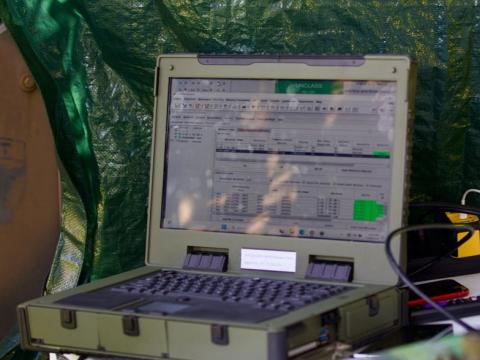
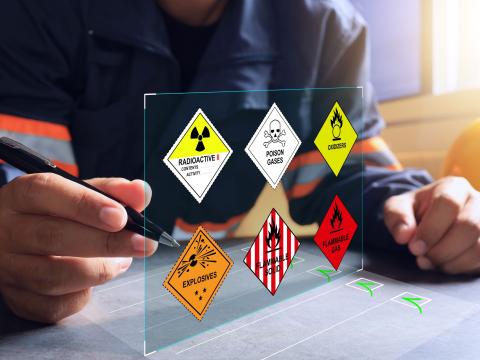

Comments